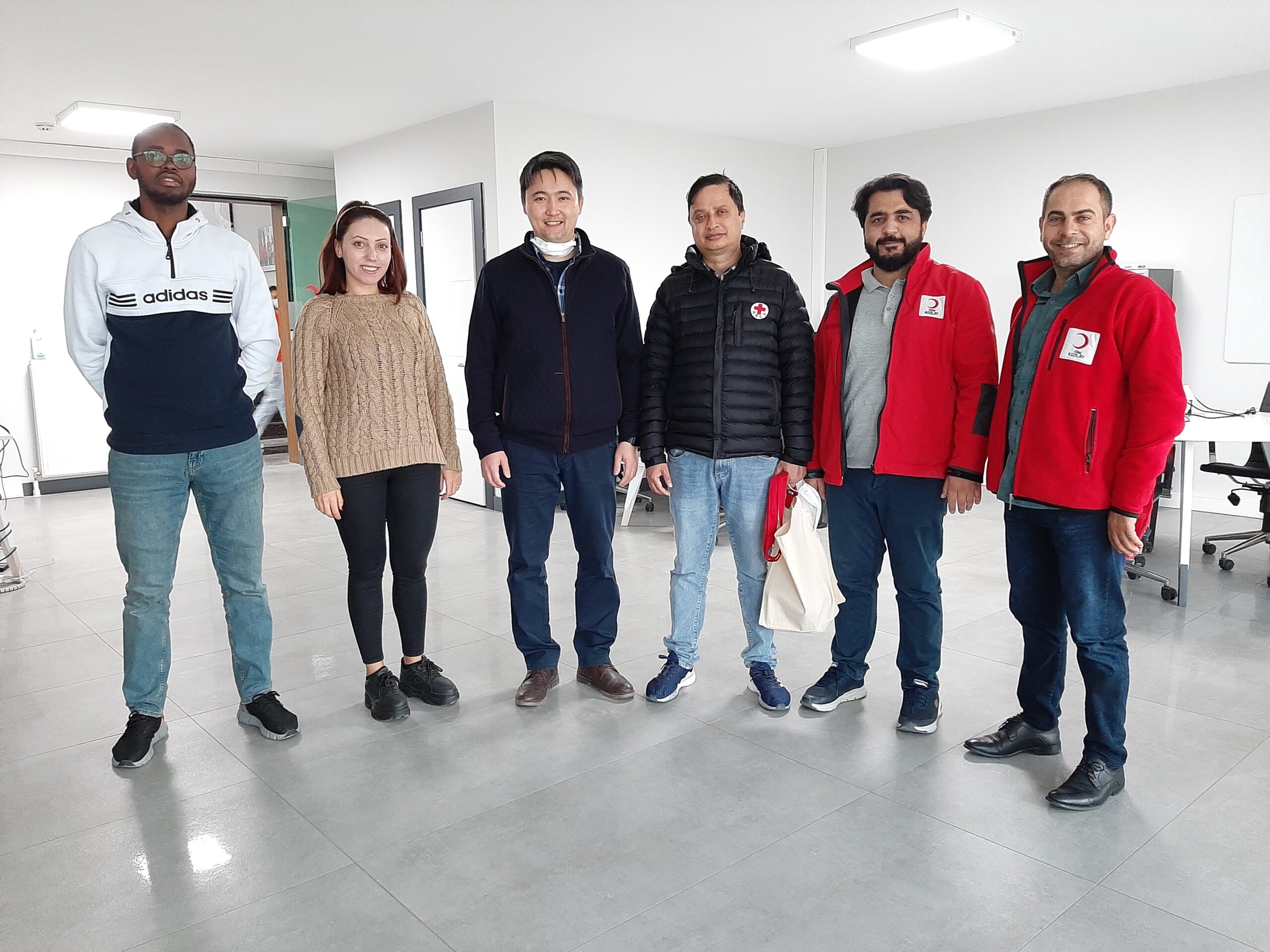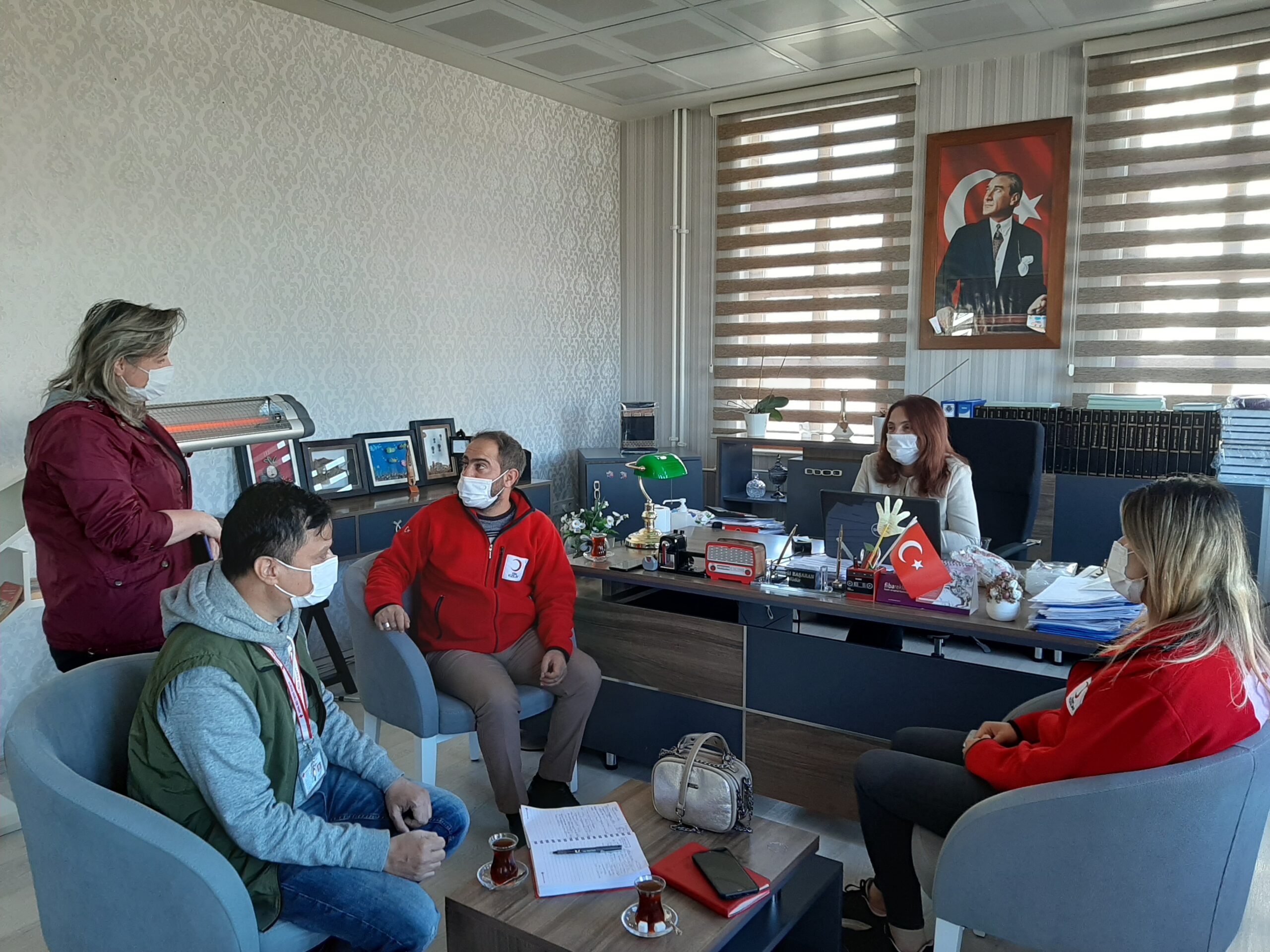April 26, 2023
CPDP Blog: Ramesh Ghimire’s story
This blog series will focus on the highlights from different Cash Practitioner Development Programme graduates, allowing practitioners to share what they have learnt and experienced during their Cash School learning deployments.
The Cash Practitioner Development Programme aims to expand the ready pool of cash experts available to deliver humanitarian cash assistance, and to strengthen the community of qualified practitioners with up-to-date skills in all areas of cash assistance. Cash deployments are a key element of participants learning schedules, these deployments aim to enhance skills and confidence in implementing cash based assistance. Some deployments are run in partnership with NORCAP, with practitioners accessing deployment opportunities from a range of humanitarian agencies.
Meet Ramesh Ghimire from Our 2021 Cash Practitioner Development Programme!
Ramesh Ghimire, former Cash and Voucher Assistance (CVA) Coordinator at the Nepal Red Cross Society and current CVA Delegate for the IFRC in Moldova, reflects on his cash journey so far and provides advice to others who are considering applying to join the Cash Practitioner Development Programme (CPDP).

Tell me about your Cash and Voucher Assistance (CVA) journey
My NS, the Nepal Red Cross, used cash as a modality to respond to the mid-west flood of 2014 and the Gorkha earthquake of 2015. I assisted in coordinating and carry out these plans with technical help from global surges. We weren’t trained and were only given some basic information because of time constraints. Instead, we were put to work in whatever area we were in and told what to do by people who said they were experts. Then, in 2017, My NS decided to initiate cash preparedness and looked for a CVA focal to organize them. I took the job happily and finished the PECT training in 2017. Then, we assessed NS’s self-capacity and developed a two-year action plan. I primarily focused on sensitizing Red Cross staff and volunteers from headquarters and chapters about the modalities, mechanism, and process of the cash delivery. Developing a cash SOP was one of the most significant tasks that the team did well. We were able to obtain funds for another capacity review of NS in 2021. The PoA was made over a three-year time, and the partners promised funding for it. During this time, I worked on getting the HQ and chapters ready and used CVA as a modality to help people in different emergency situations.
When did you first hear about the CPDP programme and why did you choose to apply?
I had heard about the CPDP programme previously and received an email from the CVA colleagues to join the next cohort. I interviewed for it and I was selected. I initially applied to the programme as I was interested in cash and markets.. I realised that this programme would enhance my existing CVA skills and knowledge.
Tell me about your best moment on the CPDP programme
- I truly appreciated having the chance to be deployed. It really enhanced my CV, knowledge and skills. I did two deployments. The first was in 2021 in Turkey and the second in Ethiopia in 2022. They were very different experiences and I would recommend the opportunity to anyone!
- My Mentor was very helpful and able to see where I needed to learn more. We talked about our goals and what we had learned, and then we decided together what would be a good way to work.
- There was a run of webinars on different topics that focused on what practitioners were interested in and helped them learn from the different situations.

I am aware that your deployment to Ethiopia was slightly different. Can you tell me what you did?
My deployment in Ethiopia was with CashCap and I was hosted by the International Organisation for Migration (IOM). In Ethiopia, I focused mainly on the Minimum Expenditure Basket (MEB) development for the Cash Working Group. The term MEB refers to the items and costs required to meet the basic needs of a household. Only during my brief visit in Ethiopia was it able to draft the MEB ToR, and I completed some preliminary work by gathering the household survey report, MEB of regions, FSP, and market mapping data from various organizations. On the other hand, I was involved with sub-national cash working group to disseminate CWG priorities, plans and MEB sensitization.. These were great learning points from my CPDP deployment.
Would you recommend the CPDP?
Yes, it is good for people working with National Societies (NS) to engage with this CVA programme. It is good to experience different contexts when working with cash. There is mentoring and a deployment component which is good for growing your existing experience of CVA and beneficial to your NS too. The CPDP is a very good platform for accessing new ideas, learning about CVA and sharing best practices. If you have the opportunity to join the programme then do it as it is a good way to learn about CVA in a practical way.
Tell me about life after the CPDP.
I am having a great time working as a CVA Delegate with the IFRC in Moldova. I work with the IFRC and at the same time provide remote support to my NS in some extent. It is interesting because in the past when I was in Nepal I was implementing CVA through receiving support from the partners and movement. Now, I am the one helping NS on their CVA preparedness initiatives
What difference has the CPDP made to you?
Undertaking the Cash Practitioner Development Programme has allowed me to contribute positively to integrate CVA in all sectors through establishment of technical working group from all departments and sectors. We also produce a newsletter regularly about CVA data which has been successful. We realised that we needed a strategy to be able to meet the 2025 IFRC strategy and so this is also something that my NS are focusing on. Lastly, I translated cash documents from English into Nepali as many of our people, including the volunteers, cannot learn about CVA due to the existing language barriers. The CVA is now widely recognized, discussed, and ready to be implemented in Red Cross chapters to carry out preparedness and response actions.

Do you have any final words on cash?
Cash assistance given to people or families helps the whole community and local economy in the long run. The National Society needs to be ready to continue the CVA journey in the future. Because of this, NS needs to be ready with things like operational processes, a map of service providers, and trained staff and volunteers.
